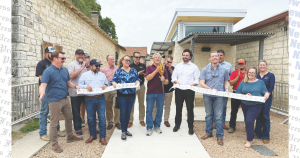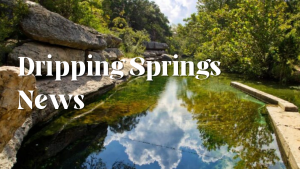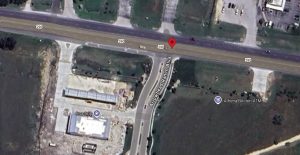Dripping Springs city leaders last week moved forward with the voluntary annexation of a 35-acre tract along U.S. Highway 290.
On Jan. 17, the Dripping Springs City Council approved annexation of the Blue Blazes Development, which could potentially hold commercial pad sites and possibly a hotel.
Michelle Fischer, Dripping Springs city administrator, said the voluntary annexation was part of a development agreement the city entered with developers of the property, which is owned by James A. Smith of Dripping Springs.
Developers applied with the city for the site plan for roadway and utilities.
However, city officials said the developers have not filled pad sites on the property and it is unknown who the end users could be.
With the annexation, the city gains control over what kind of development could go on the property, Fischer said.
Blue Blazes, per the development agreement, will be required to follow five areas of development that extend to commercial service and general retail. Certain zoning components will not be allowed.
Fischer said the developers would “love to have a hotel in there,” with the possibility of having an education campus or possibly a corporate campus.
However, the city has not received word on what could be going into Blue Blazes.
One of the reasons for annexing the property was to extend water service. Per the development agreement, Dripping Springs is the water provider for the tract of the land.
Dripping Springs has a wholesale agreement with the West Travis County Public Utility Agency, which Fischer said has a line that goes “in front of this development.”
Ginger Faught, Dripping Springs deputy city administrator, said the developer is paying for the construction of infrastructure within the development. She said the city will conduct inspections and will accept improvements after infrastructure is completed.
The development does not have a wastewater utility agreement with the city as the nearest sewer line is “quite a ways away,” Fischer said. She said one option they could use is an onsite septic system.
But if the city obtains additional wastewater capacity via a draft discharge permit that was applied for with the Texas Commission on Environmental Quality, and the collection system is extended to the property, the development would be required to connect services to the city.
Fischer said the city hasn’t hit the “triggers” yet for extending wastewater services.
“We don’t have capacity to speak of at this point,” Faught said. “Until we get the discharge permit and we get infrastructure expansion, we wouldn’t have service to the property. “
While the extent of benefit to the city is unknown at this point, Faught said the development will have dedicated parkland that will be open to the public.
“(Developers) will comply with regulations that are applicable to city limits and a lot of the end users will create jobs,” Faught said.










